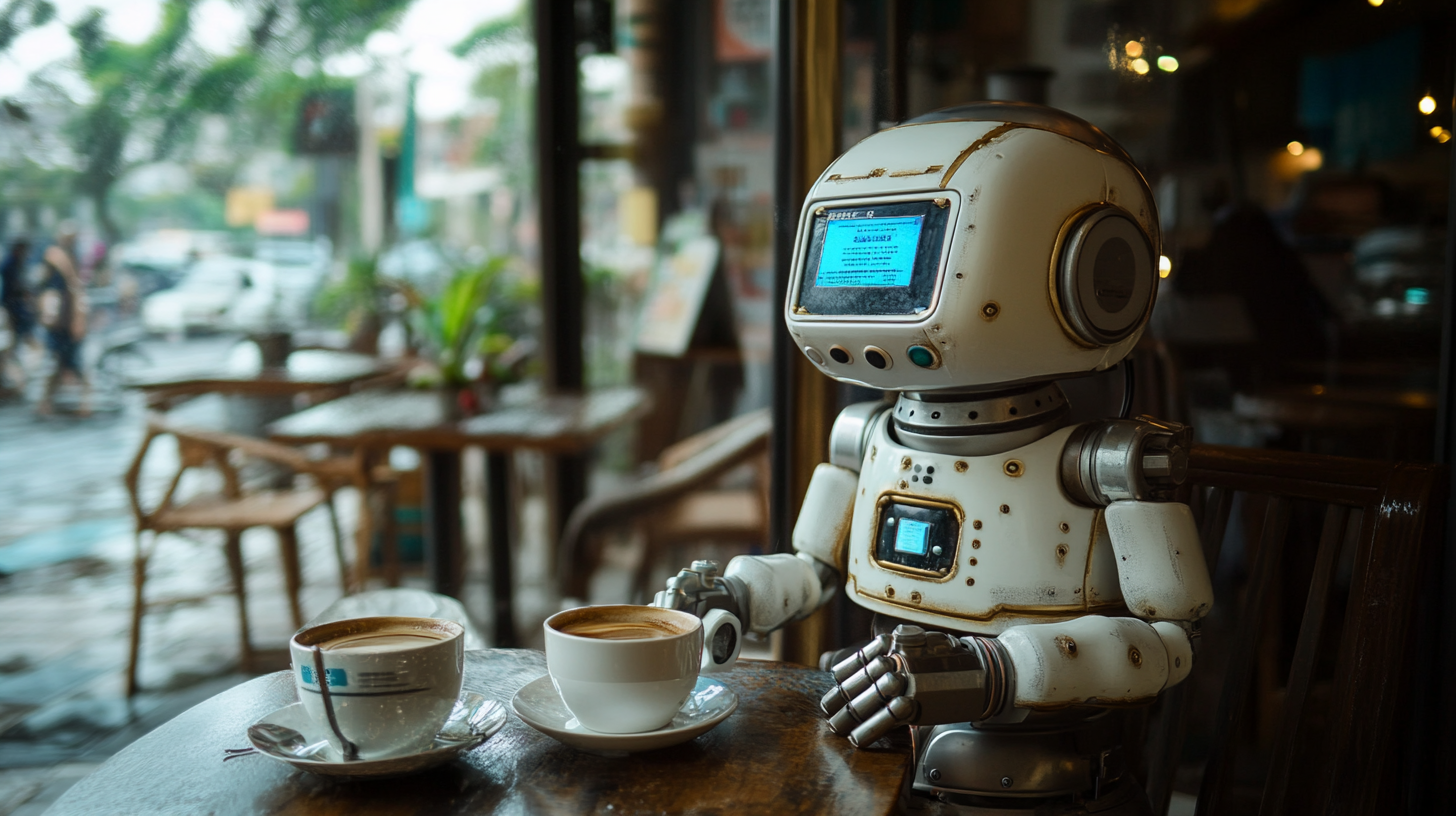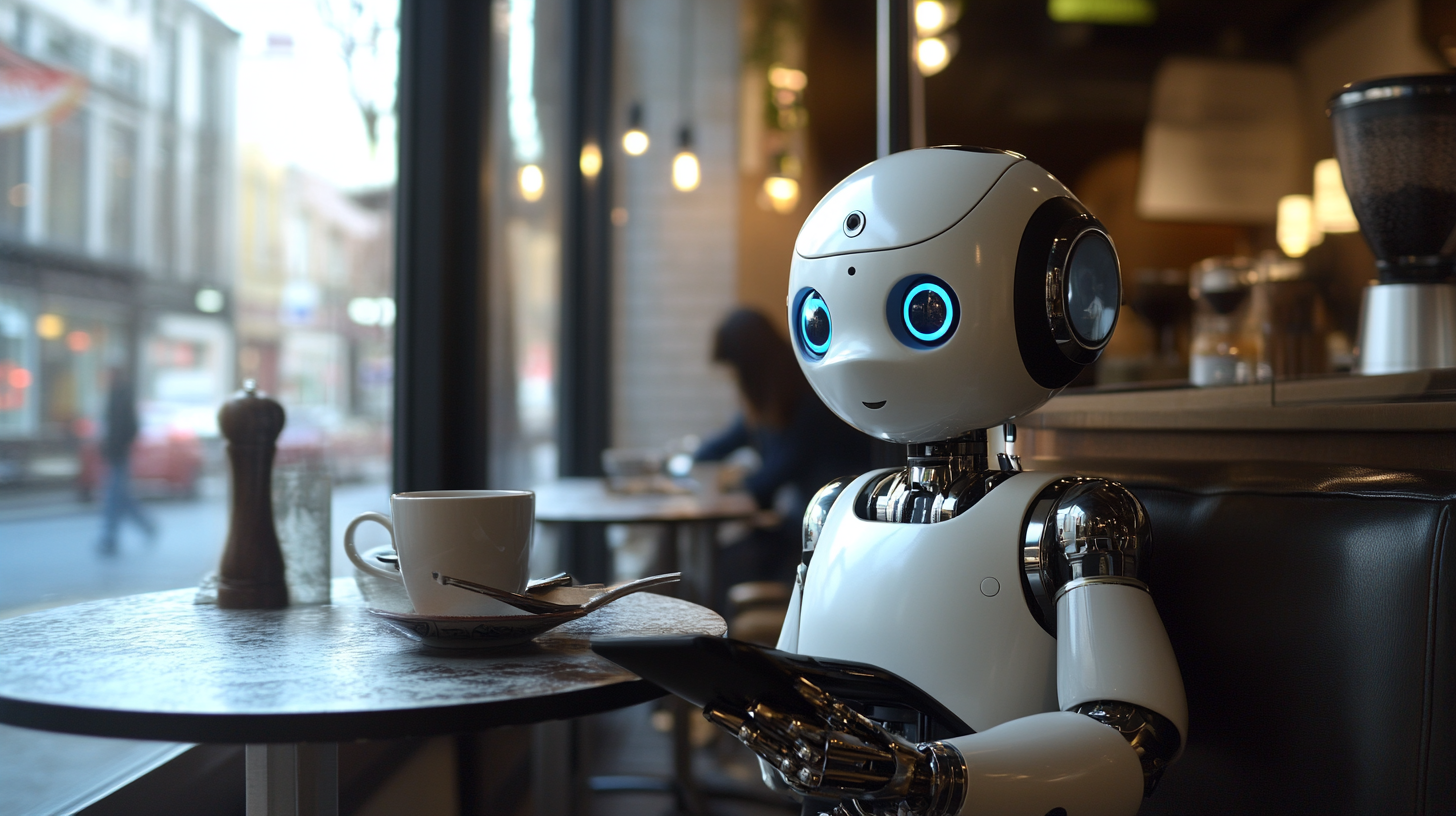Global Market Insights for Coffee Robots in 2025 with Key Strategies for Buyers
As the coffee industry continues to evolve, the emergence of coffee robots has sparked a revolution in how we brew and enjoy our favorite beverages. These advanced machines not only promise consistency and efficiency but also cater to the increasing demand for quality and convenience among consumers. By 2025, the global market for coffee robots is expected to expand significantly, driven by innovations in artificial intelligence and automation. This growth presents exciting opportunities for businesses and buyers looking to enhance their coffee offerings while staying competitive in a bustling market.
In this blog, we will delve into the global market insights for coffee robots, highlighting key trends and strategies that buyers should consider. From understanding consumer preferences to evaluating the latest technologies available, we will provide a comprehensive overview of how coffee robots are shaping the future of the coffee industry. Whether you are a café owner, a commercial buyer, or simply a coffee enthusiast, this exploration will equip you with the necessary knowledge to navigate the evolving landscape and make informed decisions regarding coffee robot investments.

Emerging Trends in Coffee Automation: The Rise of Coffee Robots by 2025
The coffee industry is undergoing a significant transformation with the rise of automation technologies, particularly coffee robots. By 2025, it is anticipated that automated coffee brewing systems will not only enhance operational efficiency but also redefine customer experience in coffee service. Recent pilot programs, such as those experimenting with automated brewing, reveal a trend that aligns with consumer preferences for convenience and consistency in quality. As the industry navigates this shift, understanding regional market dynamics becomes crucial; for instance, the global coffee market is projected to grow at a compound annual growth rate (CAGR) of 9.87% from 2024 to 2033, indicating that automation could serve as a key strategy for businesses looking to capture this growth. Moreover, the emergence of specialty coffee brands leveraging high-volume automated espresso systems is becoming increasingly common. This trend, while viewed by some as a departure from the traditional art of coffee-making, actually complements the customer-centric focus that remains paramount in coffee retail. The integration of automation not only streamlines operations but also allows baristas to focus on enhancing customer interactions and service quality. As the conversation surrounding automation continues, it raises important questions about the balance between technology and the human touch in coffee service. As we look toward 2025, the intersection of coffee automation and evolving consumer expectations will drive innovation in the industry. Whether through robotics in brewing or advancements in coffee shop layouts to integrate these efficiencies, the rise of coffee robots signals a future where convenience and quality coalesce, ensuring that the coffee experience adapts to meet the demands of modern consumers.

Key Market Players and Their Competitive Strategies in Coffee Robotics
The coffee robotics market is rapidly evolving, driven by advancements in technology and a competitive landscape that emphasizes efficiency and innovation. As the global retail coffee chains market is projected to reach approximately USD 176.65 billion by 2032, it is essential for buyers and investors to understand the competitive strategies of key market players in the coffee robotics sector. These players are not only enhancing their product offerings but also differentiating themselves through unique operational strategies that address the growing demand for automation in coffee preparation.
Recent analyses indicate that the coffee shop market, estimated at USD 165.7 billion in 2022, is on a trajectory to reach USD 229.9 billion by 2030. This growth reflects the increasing consumer preference for quality coffee and convenient service options, which robotic solutions can effectively fulfill. In this context, market leaders are developing smart coffee machines that not only improve brewing efficiency but also provide personalized customer experiences, thus establishing a competitive edge.
Technological innovations in coffee robotics are essential for addressing the evolving needs of consumers. Key players are focusing on enhanced automation features while leveraging data analytics to streamline operations. In the next few years, integrating machine learning and AI with coffee robotics is expected to propel the market further, as businesses seek to optimize their processes and reduce labor costs. The collaboration between technology firms and coffee brands will play a crucial role in shaping the future of coffee robotics, ensuring that they remain at the forefront of this burgeoning market.

Consumer Preferences and Market Demand for Coffee Robots in 2025
As we approach 2025, the coffee robot market is witnessing a significant transformation driven by evolving consumer preferences and increased market demand. Today’s consumers are not just seeking convenience but are also inclined towards personalization and quality in their coffee experiences. This shift in mindset has propelled the innovation of coffee robots, which can brew various styles, from espresso to cold brews, all tailored to individual taste profiles. The integration of artificial intelligence and machine learning technologies allows these robots to learn user preferences and offer customized suggestions, making the coffee-making process more engaging and satisfying.
Sustainability is another crucial factor influencing consumer choices. An increasing number of coffee lovers are prioritizing eco-friendly options, pushing manufacturers to design coffee robots that optimize resource usage, minimize waste, and utilize sustainable materials. Buyers are now looking for machines equipped with features that allow for recyclable or compostable coffee pods and energy-efficient brewing methods. This demand for sustainable solutions is not only reshaping product development but also prompting brands to enhance their marketing strategies around environmental responsibility.
Moreover, the growing trend of home brewing and remote work culture has led to a surge in coffee robot sales. Consumers are investing in machines that replicate café-quality coffee at home, seeking the freedom and luxury of barista-style drinks without the wait. As a result, businesses are focusing on marketing strategies that highlight the convenience and skillset of coffee robots, appealing to a customer base that craves both quality and ease in their daily coffee routines. This alignment of consumer preferences with innovative technology paves the way for a booming market in coffee robots come 2025.

Investment Insights: Budgeting for Coffee Robotics Acquisition
As the coffee robotics market continues to expand, understanding the budgeting strategies for acquiring these technologies becomes paramount for smart buyers. By 2025, the integration of robotics in coffee production is not just a trend, but a crucial component for operational efficiency and customer satisfaction. Investment in these technologies can significantly enhance productivity, reduce labor costs, and provide consistent quality that modern consumers expect.
With the U.S. smart manufacturing market projected to grow substantially, there is an increasing drive for companies to allocate their budgets wisely. Effective budgeting for coffee robotics acquisition involves a thorough assessment of current spending versus potential gains. Companies should focus on aligning their digital transformation plans with emerging technologies, ensuring that investments in AI, big data, and automation technologies complement their operational goals.
Moreover, as various sectors like food and beverage embrace digital transformation, it is vital for businesses to prioritize investments that will yield measurable returns. This could mean adopting advanced analytics to better predict consumer trends or investing in robotic solutions that streamline the coffee-making process. The ability to innovate and adapt will set successful buyers apart as they navigate this rapidly evolving landscape.
Future Challenges and Opportunities in the Coffee Robotics Industry
As the coffee robotics industry evolves, it faces both challenges and opportunities in an increasingly complex marketplace. The brewing technology landscape has witnessed rapid advancements, yet the entry thresholds remain notably low, which could lead to market saturation and heightened competition. According to recent data from market research, retail volume for small home appliances, including coffee machines, has seen a slight decline, with a reported 0.9% drop year-on-year in 2023. This reflects a shift in consumer behavior towards more rational consumption, signaling that quality expectations are on the rise even amid declining retail figures.
Against this backdrop, the integration of artificial intelligence (AI) in robotics is emerging as a game changer. The impact of AI can be profound, potentially transforming how consumers interact with their coffee-making devices. As the industry aims for increased efficiency and user-friendly experiences, robotics manufacturers are tasked with innovating beyond traditional coffee machines. An industry expert noted that the future may soon resemble a world where a home robot serves you a freshly brewed cup of coffee upon waking, highlighting the technological synergy anticipated in domestic spaces.
Moving forward, companies must strategically navigate these challenges by focusing on enhancing their product offerings. With a clear demand for higher-quality appliances, businesses that leverage sophisticated AI technologies and improve their hardware and software ecosystems stand to gain a competitive edge. As we approach 2025, understanding these dynamics will be critical for buyers looking to invest in cutting-edge coffee robotics solutions that promise to redefine consumer experiences.


